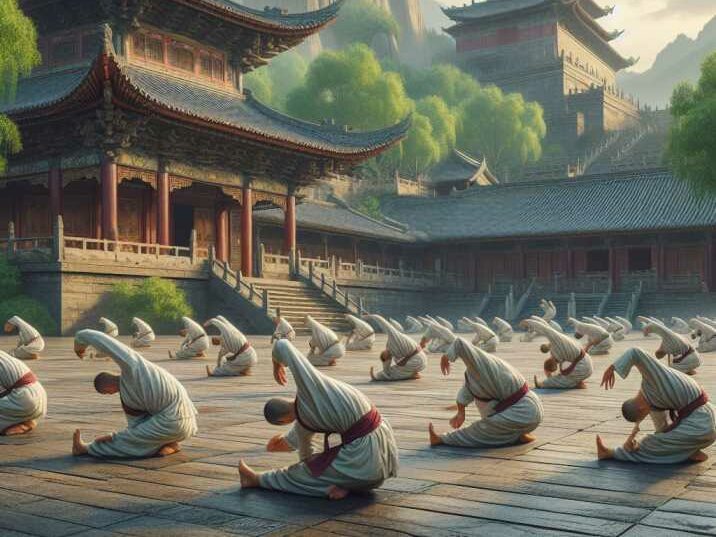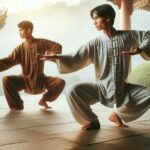Introduction:
Table of Contents
Kung Fu, an ancient Chinese martial art, has captivated the world with its grace, power, and philosophy. Behind every masterful display lies years of dedicated training, following specific routines designed to hone skills and cultivate discipline. In this article, we delve into some of the most famous Kung Fu training routines that have stood the test of time, providing insights for enthusiasts and practitioners.
The Essence of Kung Fu Training
Understanding the Philosophy
Kung Fu transcends physical movements; it embodies a philosophy of self-discipline, respect, and continuous improvement. Training routines are crafted to not only strengthen the body but also nurture the mind and spirit.
Importance of Consistency
Consistency is key in Kung Fu training. Regular practice ingrains techniques, builds muscle memory, and fosters a deeper understanding of the art. Mastery is achieved through consistent effort and dedication.
Famous Kung Fu Training Routines
Some famous Kung Fu training routines are,
Wing Chun
Wing Chun, made famous by legendary martial artist Bruce Lee, emphasizes close-range combat and swift strikes. Training includes the practice of forms, drills, and sparring techniques to develop speed, accuracy, and agility.

Tai Chi
Tai Chi, renowned for its gentle, flowing movements, focuses on balance, relaxation, and internal energy cultivation. Practitioners engage in slow, deliberate movements known as forms, promoting harmony between body and mind.
Shaolin Kung Fu
Shaolin Kung Fu, originating from the legendary Shaolin Temple, encompasses a wide range of styles, each with its unique training methods. Training involves rigorous physical conditioning, flexibility drills, and mastery of various forms and techniques.

Jeet Kune Do
Jeet Kune Do, developed by Bruce Lee, is not confined to fixed patterns or forms. It emphasizes adaptability, using techniques from different martial arts styles. Training focuses on agility, timing, and interception, enabling practitioners to flow effortlessly in combat.
Key Components of Famous Kung Fu Training
Forms (Kata)
Forms, also known as Kata in some styles, are choreographed sequences of movements that simulate combat scenarios. Practicing forms enhances technique, coordination, and fluidity of movement.
Drills and Conditioning
Drills and conditioning exercises are essential for building strength, endurance, and muscle memory. These include striking drills, stance training, and cardiovascular exercises tailored to improve overall fitness.
Sparring
Sparring, simulated combat with a partner, allows practitioners to apply techniques in a dynamic setting. It hones reflexes, timing, and adaptability while providing invaluable experience in real-time combat situations.
Benefits of Kung Fu Training
Physical Fitness
Kung Fu training enhances physical fitness by improving strength, flexibility, agility, and cardiovascular health. It promotes overall well-being and vitality.
Mental Discipline
The discipline cultivated through Kung Fu training extends beyond the physical realm. It instills focus, patience, and mental resilience, fostering a balanced and disciplined mindset.
Self-Defense Skills
Beyond its philosophical and physical aspects, Kung Fu equips practitioners with practical self-defense skills, empowering them to protect themselves and others in challenging situations.
Table of Information:
| Kung Fu Style | Key Characteristics |
|---|---|
| Wing Chun | Close-range combat, swift strikes |
| Tai Chi | Gentle, flowing movements, internal energy |
| Shaolin Kung Fu | Wide range of styles, rigorous training |
| Jeet Kune Do | Adaptability, interception, flowing movements |
Conclusion:
Famous Kung Fu training routines are not just about physical exertion; they are a journey of self-discovery and mastery. Through consistent practice and dedication, practitioners unlock the true essence of Kung Fu, embodying its principles in both their martial prowess and daily lives.
FAQs (Frequently Asked Questions)
Q1: How often should I practice Kung Fu?
Consistency is key. Aim for regular practice sessions, ideally several times a week, to maximize progress and skill development.
Q2: Can anyone practice Kung Fu, regardless of age or fitness level?
Yes, Kung Fu can be practiced by individuals of all ages and fitness levels. It can be adapted to suit varying physical capabilities.
Q3: Are there different styles of Kung Fu, and how do I choose the right one for me?
Yes, there are numerous styles of Kung Fu, each with its unique characteristics. Research different styles, try introductory classes, and choose one that resonates with your goals and preferences.
Q4: Is Kung Fu training only about physical techniques, or does it involve mental and philosophical aspects as well? Kung Fu encompasses both physical techniques and philosophical principles, emphasizing self-discipline, respect, and continuous self-improvement.
Q5: Can Kung Fu training be beneficial for children?
Yes, Kung Fu training can be highly beneficial for children, promoting physical fitness, mental discipline, and self-confidence while instilling important values such as respect and perseverance.


